Reducing Risks in Energy Innovation Projects: Complexity Theory Perspective
Abstract
1. Introduction
1.1. The High-Risk Potential of Energy Innovation Projects
- Megaprojects: Despite huge financial investments in megaprojects, historical data indicate very poor performance [1].
- Innovative feature of EIPs: When it comes to innovation projects, goals often remain unclear and are vaguely defined; processes tend to be experimental and exploratory, while the risks run high [2]. A high failure rate, and the need to stimulate creativity [3], sets innovation projects apart from other types of projects as well as constant learning.
- Multidisciplinary project teams are common characteristics of both megaprojects and innovative projects.
- Many stakeholders, often with conflicting interests [5].
- Difficult decision making as consequence of the previous two characteristics.
- Numerous threats from the environment, which are hard to predict [5].
1.2. Energy Innovation Projects as Complex Adaptive Systems (CAS)
- Both consist of a vast number of different elements that interact with each other, and must constantly adapt to changing environmental conditions. There is a complex implementation of many project activities [5], and there are many actors of energy systems that interact through networks, e.g., physical and social structures [11].
- Uncertainty in the long run is the common characteristic of both EIPs and CAS. Unlike risks, there is no way to calculate uncertainty (or ’the unknown unknowns’), because we cannot imagine it [15]. Although managing uncertainty sounds a bit ‘oxymoronic’ [16], the same author believes that experimental learning can reduce uncertainty.
- Since innovation does not represent a linear process [17], the innovation feature of energy projects, by its very nature, contains elements of non-linearity or nonlinear behavior (for example, technical systems when operated close to saturation). Creativity is often brought in connection with a chaotic, experimental, unpredictable atmosphere, and poorly structured process [18], therefore engaging more people in the creative processes does not necessarily mean achieving better energy performances.
- In far-from-equilibrium conditions, positive (reinforcing) feedback loops convert small inputs into gigantic changes [19], which is also known as the butterfly effect which is present in innovation processes and energy systems. Positive (reinforcing) feedback loops are also present in social structures For example, bad interpersonal relations can cause the failure to achieve desired results; consequently, the lack of desired results can cause bad interpersonal relations and so on (domino effect).
- Emergence phenomenon goes together with systems approach as “the whole is greater than the sum of its parts” (Aristotle). Some manifestations of emergence in EIPs are:
- ○
- Synergy (or the T.E.A.M. acronym—“together everyone achieves more” [21]): People join their forces (ideas, knowledge, skills, technology, resources) and bring something new. This is a positive example of emergence, and it encourages innovation.
- ○
- Emergent risks: There are new risks which emerge from existing risks over time (such as global warming [22]).
- ○
- Emergent behavior: System behavior is independent of the behavior of its individual agents (for instance, a new project culture emerges from the group of people involved in a project).
- EIPs demand a systems approach (CAS are also systems). Kapsali [23] concluded that the methods of systems thinking provide the necessary flexibility for managing innovativeness, complexity, and uncertainty.
1.3. Research Goals
- Sources of risks in EIPs;
- Background for better understanding of risks; and
- Opportunities for risk reduction.
2. Literature Review
2.1. Reducing Risks in Energy Innovation Projects
2.2. Application of Complexity Theory Elements in Energy Innovation Projects
2.2.1. Specific Aspects of Energy Innovation Projects
- “[C]omplexity can refer to the complex interaction structures of components in a technological system”; and
- “[C]omplexity can refer to structures of interactions between agents in innovation networks.”
2.2.2. Social and Behavioral Aspects of Energy Innovation Projects
2.2.3. Operational Aspects of Energy Innovation Projects
3. Definition of Research Framework
4. Research Method
4.1. Description and Validation of Questionnaire
- The local minimum is reached with the next results:
- ○
- Chi-square = 171.922
- ○
- Degrees of freedom = 154
- ○
- Probability level = 0.153
- CMIN/DF (Minimum discrepancy, divided by its degrees of freedom) = 1.116
- RMSEA (Root mean square error of approximation) = 0.034
- RMR (Root mean square residual) = 0.044
- SRMR (Standardized RMR) = 0.0778
- IFI (Incremental fit index) = 0.934
- TLI (Tucker–Lewis index) = 0.906
- CFI (Comparative fit index) = 0.924
4.2. Formation of the Independent Variables and the Dependent Variable
4.3. Sample Description
5. Analysis of Data and Results
5.1. Data Reliability
5.2. Pearson Correlation and Partial Correlation
5.3. Linear Regression
- Tests for linearity: Since ANOVA deviation from linearity sig. is higher than 0.05 in all cases (for all independent variables in relation to the dependent one: 0.949, 0.185, 0.725), the authors conclude that there is linear relationship, so the linear regression can be applied to the data.
- Outliers: Casewise diagnostics in SPSS is used to ensure that there are no significant outliers.
- Autocorrelation: Durbin-Watson test equals 1.946, so there is no autocorrelation between the variables (please check Section 5.1).
- Normality: The errors are normally distributed (Figure 4).
- Homoscedasticity, i.e., homogeneity of variance: The error variance is shown to be fairly constant.
6. Discussion
- Technological complexity is still traditionally associated with high risks.
- In the case of uncertainty in energy innovations, in addition to project learning, there is a need to constantly learn from the environment as well as “in-house” learning (for more details please see Figure 5).
- Most respondents believed that the reliance on intuition is not desirable in risk management processes.
7. Conclusions
- Statistical significance of the main indices suggests that taking into account complexity theory elements leads to reducing risks in EIPs. It gives reasonable ground to justified belief that complexity theory can find application in challenging field of overcoming the high-risk potential of EIPs.
- Social and behavioral aspects, in general human/non-technical risk factors, are becoming increasingly important for the success of EIPs, which calls for further research in this direction.
- Complexity theory offers a solid theoretical background for the better understanding of risk factors in EIPs. Therefore, education of the project manager in this regard is important for the success of EIPs. It also implies the use of methods that support dealing with complexity in the field of risk management in an appropriate manner.
- Risk philosophy based on complexity theory is useful in finding opportunities for risk reduction. In addition, this paper suggests that complexity does not necessarily increase the EIP risks, on the contrary, complexity insights can be useful for decreasing the high-risk potential of EIPs.
- Integrated consideration of different risk factors, not separately, is one of the crucial ideas from this paper.
- Reducing risks in EIPs from the complexity theory viewpoint is more efficient in the case of the prevention of unwanted events, in comparison to reducing the effects of unwanted events that have already occurred.
- Lessons learnt from complexity theory (presented in the form of recommendations for project managers) show how to take into account all discussed elements of complexity theory, thus reducing risks in EIPs. In turn, this is supposed to generate better results in EIP management and in the field of energy innovation in general.
Author Contributions
Funding
Acknowledgments
Conflicts of Interest
Appendix A. Questionnaire
- Reducing risks in EIPs:
- Rate the importance of flexibility of EIP structure for reducing risks in EIPs.
- Rate the importance of the adjusting of EIPs to changes in the environment for reducing risks in EIPs.
- Rate the influence of focus on interpersonal relationships in EIP teams on risk reduction in EIPs.
- Rate the influence of dedication to stakeholder relations on risk reduction in EIPs.
- Rate the importance of using different methods and different combinations of methods for solving different risk problems in EIPs in order to reduce the probability and impact of such risks.
- Rate the influence of the early identification of risk events on the suppression of risk factors in EIPs.
- Specific aspects:
- 7.
- Rate the agreement with the statement that self-organization between too much control and too much freedom in EIPs decreases the risk of EIP failure.
- 8.
- Rate the influence of avoidance of negative attitudes towards risks related with usage of complex technology on reducing risks in EIPs.
- 9.
- Rate the importance of the experiential knowledge, gained in previous projects and during the implementation of EIP, for the management of EIP under uncertainty, i.e., the importance of evolutionary learning for reducing risks in EIP that come from uncertainty.
- 10.
- Rate the importance of consideration of complexity of the time we live on reducing risks in EIPs.
- Social and behavioral aspects:
- 11.
- Rate the importance of intuition in identifying risk factors in EIPs (and hence its reduction).
- 12.
- Rate the importance of adequate dealing with cognitive complexity (e.g., by raising the motivation of EIP team members) for risk reduction in EIPs.
- 13.
- Rate the influence of considering the aspects of cultural complexity on decreasing human factor risks in EIP teams.
- 14.
- Rate the agreement with the statement that increasing the quality of communication by overcoming communication complexity in EIP teams is a significant factor in reducing risks in EIPs.
- 15.
- Rate the importance of the leadership role of the project manager and their understanding of social complexity in conditions of uncertainty for risk reduction in EIPs.
- 16.
- Rate the importance of successfully dealing with the emotional complexity of the project manager for eliminating human risk factors in EIPs.
- Operational aspects:
- 17.
- Rate the importance of the analysis of mutual influences of risks in EIP and identifying new risks over time (emerging from the ‘old’ risks) for EIP risk reduction.
- 18.
- Rate the importance of fuzzy logic application for subjective risk assessments, i.e., for the reduction of subjective risk factors in EIPs, under the conditions of handling with insufficient data and incomplete knowledge.
- 19.
- Rate the importance of using the system dynamics technique for solving problems of causal embeddedness easier, and for more efficient solution of risk events in EIPs, and, therefore, the importance of using the system dynamics technique for reducing risks in EIPs.
- 20.
- Rate the influence of decreasing organizational complexity (simplifying tasks, work processes, and organizational layers in a project) on risk reduction in EIPs.
References
- Locatelli, G.; Littaub, P.; Brookesc, N.J.; Mancini, M. Project characteristics enabling the success of megaprojects: An empirical investigation in the energy sector. Procedia Soc. Behav. Sci. 2014, 119, 625–634. [Google Scholar] [CrossRef]
- Filippov, S.; Mooi, H. Innovation project Management: A Research Agenda. RISUS J. Innov. Sustain. 2010, 1, 22. [Google Scholar] [CrossRef]
- Bowers, J.; Khorakian, A. Integrating risk management in the innovation project. Eur. J. Innov. Manag. 2014, 17, 25–40. [Google Scholar] [CrossRef]
- Silvius, G.; Schipper, R. Sustainability and Projects. In Sustainability in Project Management; Silvius, G., Schipper, R., Planko, J., van den Brink, J., Köhler, A., Eds.; Gower Publishing Ltd.: Aldershot, UK, 2012. [Google Scholar]
- Mihic, M.M.; Petrovic, D.C.; Obradovic, V.L.; Vuckovic, A.M. Project Management Maturity Analysis in the Serbian Energy Sector. Energies 2015, 8, 3924–3943. [Google Scholar] [CrossRef]
- World Energy Council, Oliver Wyman. World Energy Trillema 2017. Changing Dynamics—Using Distributed Energy Resources to Meet the Trilemma Challenge. 2017. Available online: https://www.worldenergy.org/wp-content/uploads/2017/11/World-Energy-Trilemma-2017_Full-report_WEB.pdf (accessed on 3 July 2018).
- Doskočil, R.; Lacko, B. Risk management and knowledge management as critical success factors of sustainability projects. Sustainability 2018, 10, 1438. [Google Scholar] [CrossRef]
- Yim, R.; Castaneda, J.; Doolen, T.; Tumer, I.; Malak, R. A study of the impact of project classification on project risk indicators. Int. J. Proj. Manag. 2015, 33, 863–876. [Google Scholar] [CrossRef]
- Thomas, J.; Mengel, T. Preparing project managers to deal with complexity—Advanced project management education. Int. J. Proj. Manag. 2008, 26, 304–315. [Google Scholar] [CrossRef]
- Allen, P. Complexity, uncertainty and innovation. Econ. Innov. New Technol. 2013, 22, 702–725. [Google Scholar] [CrossRef]
- Bale, C.S.E.; Varga, L.; Foxon, T.J. Energy and complexity: New ways forward. Appl. Energy 2015, 138, 150–159. [Google Scholar] [CrossRef]
- Hass, K.B. Managing Complex Projects: A New Model, Management Concepts; Leesburg Pike: Vienna, VA, USA, 2009; ISBN 978-1567262339. [Google Scholar]
- Engler, J.J. Innovation as a Complex Adaptive System; University of Iowa: Iowa City, Iowa, 2009. [Google Scholar]
- Mihić, M.; Dodevska, Z. Innovation project management between the Newtonian paradigm and the complexity paradigm. Serb. Proj. Manag. J. 2015, 5, 10–17. [Google Scholar]
- Brink, T. Managing uncertainty for sustainability of complex projects. Int. J. Manag. Proj. Bus. 2017, 10, 315–329. [Google Scholar] [CrossRef]
- Paju, S. Managing Uncertainty in Innovative Projects: The Experimentation-Driven Approach; Aalto University: Aalto, Finland, 2013. [Google Scholar]
- Shin, J.; Kim, C.; Yang, H. The Effect of Sustainability as Innovation Objectives on Innovation Efficiency. Sustainability 2018, 10, 1966. [Google Scholar] [CrossRef]
- Belliveau, P.; Griffin, A.; Somermeyer, S. The PDMA Toolbook 1 for New Product Development, 1st ed.; John Wiley & Sons: New York, NY, USA, 2002; ISBN 0-471-20611-3. [Google Scholar]
- Mitleton-Kelly, E. (Ed.) Ten Principles of Complexity & Enabling Infrastructures. In Complex Systems and Evolutionary Perspectives on Organisations: The Application of Complexity Theory to Organisations; Advanced Series in Management; Elsevier Science Ltd.: Oxford, UK, 2003; pp. 23–50. ISBN 9780080439570. [Google Scholar]
- Geraldi, J.G. The balance between order and chaos in multi-project firms: A conceptual model. Int. J. Proj. Manag. 2008, 26, 348–356. [Google Scholar] [CrossRef]
- Brenner, D.A. Achieving a Successful Project by Motivating the Project Team. Cost Eng. 2017, 49, 16–20. [Google Scholar]
- Richardson, B.; Gerzon, P. Emergent Risks. Research Paper. The Institute of Risk Management: London, UK. Available online: https://www.iia.org.uk/media/91711/emergent_risks.pdf (accessed on 10 July 2018).
- Kapsali, M. Systems thinking in innovation project management: A match that works. Int. J. Proj. Manag. 2011, 29, 396–407. [Google Scholar] [CrossRef]
- Project Management Institute. PMBOK Guide—A Guide to the Project Management Body of Knowledge, 6st ed.; Project Management Institute: Newtown Square, PA, USA, 2017; ISBN 978-1-62825-184-5. [Google Scholar]
- Floricel, S.; Piperca, S.; Banik, M. Increasing Project Flexibility: The Response Capacity of Complex Projects; Project Management Institute: Newtown Square, PA, USA, 2011. [Google Scholar]
- Kapsali, M. Equifinality in project management exploring causal complexity in projects. Syst. Res. Behav. Sci. 2013, 30, 2–14. [Google Scholar] [CrossRef]
- Jugdev, K.; Mathur, G. Classifying project management resources by complexity and leverage. Int. J. Manag. Proj. Bus. 2012, 5, 105–124. [Google Scholar] [CrossRef]
- Shenhar, A.J.; Dvir, D. Reinventing Project Management: The Diamond Approach to Successful Growth and Innovation; Harvard Business School: Boston, MA, USA, 2007; ISBN 1-59139-800-2. [Google Scholar]
- Thamhain, H. Managing risks in complex projects. Proj. Manag. J. 2013, 44, 20–35. [Google Scholar] [CrossRef]
- Geraldi, J.G.; Turner, J.R.; Maylor, H.; Söderholm, A.; Hobday, M.; Brady, T. Innovation in project management: Voices of researchers. Int. J. Proj. Manag. 2008, 26, 586–589. [Google Scholar] [CrossRef]
- Kumar, A.; Sah, B.; Singh, A.R.; Deng, Y.; He, X.; Kumar, P.; Bansal, R.C. A review of multi criteria decision making (MCDM) towards sustainable renewable energy development. Renew. Sustain. Energy Rev. 2017, 69, 596–609. [Google Scholar] [CrossRef]
- Kerzner, H. Project Management: A Systems Approach to Planning, Scheduling, and Controlling; John Wiley & Sons: Hoboken, NJ, USA, 2017. [Google Scholar]
- Small, J.; Walker, D. The emergent realities of project praxis in socially complex project environments. Int. J. Manag. Proj. Bus. 2010, 3, 147–156. [Google Scholar] [CrossRef]
- Karlsen, J.T. Project stakeholder management. Eng. Manag. J. 2002, 14, 19–24. [Google Scholar] [CrossRef]
- Wyrozębski, P.; Wyrozębska, A. Challenges of project planning in the probabilistic approach using PERT, GERT and Monte Carlo. J. Manag. Mark. 2013, 1, 1–8. [Google Scholar]
- Stosic, B.; Mihic, M.; Milutinovic, R.; Isljamovic, S. Risk identification in product innovation projects: New perspectives and lessons learned. Technol. Anal. Strat. Manag. 2016, 29, 133–148. [Google Scholar] [CrossRef]
- Ahern, T.; Leavy, B.; Byrne, P.J. Complex project management as complex problem solving: A distributed knowledge management perspective. Int. J. Proj. Manag. 2014, 32, 1371–1381. [Google Scholar] [CrossRef]
- Jackson, M.C. Systems Thinking: Creative Holism for Managers; John Wiley & Sons: Chichester, UK, 2003. [Google Scholar]
- Remington, K.; Pollack, J. Tools for Complex Project. In Aspects of Complexity: Managing Projects in a Complex World; Cooke-Davies, T., Ed.; Project Management Institute: Newtown Square, PA, USA, 2011; pp. 29–40. ISBN 978-1-935589-30-3. [Google Scholar]
- Klakegg, O.J.; Torp, O.; Austeng, K. Good and simple—A dilemma in analytical processes. Int. J. Manag. Proj. Bus. 2010, 3, 402–421. [Google Scholar] [CrossRef]
- Baccarini, D. The concept of project complexity—A review. Int. J. Proj. Manag. 1996, 14, 201–204. [Google Scholar] [CrossRef]
- Frenken, K. Technological innovation and complexity theory. Econ. Innov. New Technol. 2006, 15, 137–155. [Google Scholar] [CrossRef]
- Tidd, J.; Bessant, J. Managing Innovation: Integrating Technological, Market and Organizational Change, 4th ed.; John Wiley & Sons: Chichester, UK, 2009. [Google Scholar]
- Williams, T. The need for new paradigms for complex projects. Int. J. Proj. Manag. 1999, 17, 269–273. [Google Scholar] [CrossRef]
- Turner, J.R.; Cochrane, R.A. Goals-and-methods matrix: Coping with projects with ill defined goals and/or methods of achieving them. Int. J. Proj. Manag. 1993, 11, 93–102. [Google Scholar] [CrossRef]
- Jaafari, A. Project Management in the Age of Complexity and Change. Proj. Manag. J. 2003, 34, 47–57. [Google Scholar] [CrossRef]
- Cagliano, A.C.; Grimaldi, S.; Rafele, C. Choosing project risk management techniques. A theoretical framework. J. Risk Res. 2015, 18, 232–248. [Google Scholar] [CrossRef]
- Saynisch, M. Beyond frontiers of traditional project management: An Approach to evolutionary, self-organizational principles and the complexity theory—Results of the research program. Proj. Manag. J. 2010, 41, 21–37. [Google Scholar] [CrossRef]
- Kerzner, H.; Belack, C. Risk Management. In Managing Complex Projects; John Wiley & Sons: Hoboken, NJ, USA, 2010; pp. 271–293. ISBN 9780470927977. [Google Scholar] [CrossRef]
- Cooke-Davies, T. Complexity in project management and the management of complex projects. In Aspects of Complexity: Managing Projects in a Complex World; Cooke-Davies, T., Ed.; Project Management Institute: Newtown Square, PA, USA, 2011; pp. 1–14. ISBN 978-1-935589-30-3. [Google Scholar]
- Azim, S.; Gale, A.; Lawlor-Wright, T.; Kirkham, R.; Khan, A.; Alam, M. The importance of soft skills in complex projects. Int. J. Manag. Proj. Bus. 2010, 3, 387–401. [Google Scholar] [CrossRef]
- Williams, T.; Klakegg, O.J.; Walker, D.H.; Andersen, B.; Magnussen, O.M. Identifying and acting on early warning signs in complex projects. Proj. Manag. J. 2012, 43, 37–53. [Google Scholar] [CrossRef]
- Leybourne, S.; Sadler-Smith, E. The role of intuition and improvisation in project management. Int. J. Proj. Manag. 2006, 24, 483–492. [Google Scholar] [CrossRef]
- Tsoukas, J.; Hatch, M.J. Complex thinking, complex practice: The case for a narrative approach to organizational complexity. Hum. Relat. 2001, 54, 979–1013. [Google Scholar] [CrossRef]
- Boschetti, F.; Hardy, P.; Grigg, N.; Horwitz, P. Can we learn how complex systems work? Emerg. Complex. Organ. 2011, 13, 47–62. [Google Scholar]
- Brockmann, C.; Girmscheid, G. The inherent complexity of large scale engineering projects. Proj. Perspect. 2008, 29, 22–26. [Google Scholar] [CrossRef]
- Camprieu, R.D.; Desbiens, J.; Feixue, Y. ‘Cultural’ differences in project risk perception: An empirical comparison of China and Canada. Int. J. Proj. Manag. 2007, 25, 683–693. [Google Scholar] [CrossRef]
- Adler, N.J.; Gundersen, A. International Dimension of Organizational Behaviour, 5th ed.; Thomson South-Western: Mason, OH, USA, 2008. [Google Scholar]
- Leybourne, S.A.; Kanabar, V.; Warburton, R.D.H. Understanding and Overcoming Communications Complexity in Projects, PMI® Global Congress 2010—North America, Washington, DC; Project Management Institute: Newtown Square, PA, USA, 2010. [Google Scholar]
- Obradovic, V.; Jovanovic, P.; Petrovic, D.; Mihic, M.; Bjelica, D. Web-based project management influence on project portfolio managers’ technical competencies. Procedia Soc. Behav. Sci. 2014, 119, 387–396. [Google Scholar] [CrossRef]
- Freeberg, T.M.; Dunbar, R.I.M.; Ord, T.J. Social complexity as a proximate and ultimate factor in communicative complexity. Philos. Trans. R. Soc. Lond. B Biol. Sci. 2012, 367, 1785–1801. [Google Scholar] [CrossRef] [PubMed]
- Denison, D.R.; Hooijberg, R.; Quinn, R.E. Paradox and performance: Toward a theory of behavioral complexity in managerial leadership. Organ. Sci. 1995, 6, 524–540. [Google Scholar] [CrossRef]
- Wüstenhagen, R.; Wolsink, M.; Bürer, M.J. Social acceptance of renewable energy innovation: An introduction to the concept. Energy Policy 2007, 35, 2683–2691. [Google Scholar] [CrossRef]
- Obradovic, V.; Jovanovic, D.; Petrovic, D.; Mihic, M.; Mitrovic, Z. Project managers’ emotional intelligence—A ticket to success. Procedia Soc. Behav. Sci. 2013, 74, 274–284. [Google Scholar] [CrossRef]
- Kang, S.M.; Shaver, P.R. Individual differences in emotional complexity: Their psychological implications. J. Pers. 2004, 72, 687–726. [Google Scholar] [CrossRef] [PubMed]
- Holland, J.H. Emergence from Chaos to Order; Oxford University Press: Oxford, UK, 1998; ISBN 978-0-19-286211-2. [Google Scholar]
- Pohekar, S.D.; Ramachandran, M. Application of multi-criteria decision making to sustainable energy planning—A review. Renew. Sustain. Energy Rev. 2004, 8, 365–381. [Google Scholar] [CrossRef]
- Ghomshei, M.; Porkhial, S.; Pappalardo, M. Complexity in energy policy: A fuzzy logic methodology. In Proceedings of the 6th International Conference on Fuzzy Systems and Knowledge Discovery, Tianjin, China, 14–16 August 2009. [Google Scholar]
- Dodevska, Z.; Mihic, M. Theory of complexity and innovation projects. In Proceedings of the XIV International Symposium SymOrg 2014: New Business Models and Sustainable Competitiveness, SymOrg 2014, Zlatibor, Serbia, 6–10 June 2014; Marković, A., Barjaktarović-Rakočević, S., Eds.; University of Belgrade, Faculty of Organizational Sciences: Belgrade, Serbia, 2014; pp. 1460–1468. [Google Scholar]
- Shang, K.; Hossen, Z. Applying Fuzzy Logic to Risk Assessment and Decision-Making; Casualty Actuarial Society, Canadian Institute of Actuaries, Society of Actuaries, 2013; Available online: https https://www.soa.org/Files/Research/Projects/research-2013-fuzzy-logic.pdf (accessed on 10 June 2018).
- Williams, T. Learning from projects. J. Oper. Res. Soc. 2003, 54, 443–451. [Google Scholar] [CrossRef]
- Checkland, P.; Williams, T. System Thinking and the Systems Movement. In Aspects of Complexity: Managing Projects in a Complex World; Cooke-Davies, T., Ed.; Project Management Institute: Newtown Square, PA, USA, 2011; pp. 135–148. ISBN 978-1-935589-30-3. [Google Scholar]
- Minami, N.A.; Madnick, S.; Rhodes, D. A Systems Approach to Risk Management. ©American Society for Engineering Management Conference Proceedings, 12–15 November 2008, Working Paper CISL# 2008-18. Available online: https://ic3.mit.edu/wp-content/uploads/2017/11/2008-18.pdf (accessed on 10 June 2018).
- Tan, B.; Anderson, E.G.; Dyer, J.S.; Parker, G.G. Evaluating system dynamics models of risky projects using decision trees: Alternative energy projects as an illustrative example. Syst. Dyn. Rev. 2010, 26, 1–17. [Google Scholar] [CrossRef]
- Wang, T.; He, Q.; Lu, Y.; Yang, D. How does organizational citizenship behavior (OCB) affect the performance of megaprojects? Insights from a system dynamic simulation. Sustainability 2018, 10, 1708. [Google Scholar] [CrossRef]
- Ansell, T.; Cayzer, S. Limits to growth redux: A system dynamics model for assessing energy and climate change constraints to global growth. Energy Policy 2018, 120, 514–525. [Google Scholar] [CrossRef]
- Schreiber, J.B.; Nora, A.; Stage, F.K.; Barlow, E.A.; King, J. Reporting Structural Equation Modeling and Confirmatory Factor Analysis Results: A Review. J. Educ. Res. 2006, 99, 323–338. [Google Scholar] [CrossRef]
- Bentler, P.M. Comparative fit indexes in structural models. Psychol. Bull. 1990, 107, 238–246. [Google Scholar] [CrossRef] [PubMed]
- Brown, T.A. Confirmatory Factor Analysis for Applied Research; Guilford Press: New York, NY, USA, 2006. [Google Scholar]
- Savin, N.E.; White, K.J. The Durbin–Watson test for serial correlation with extreme sample sizes or many regressors. Econometrica 1977, 45, 1989–1996. [Google Scholar] [CrossRef]
- Pallant, J. SPSS Survival Manual: A Step by Step Guide to Data Analysis Using SPSS for Windows Version 12; Allen & Unwin: Crows Nest, NSW, Australia, 2005. [Google Scholar]
- De Vaus, D.A. Surveys in Social Research; Psychology Press: London, UK, 2002. [Google Scholar]
- Todorović, M.; Petrović, D.; Mihić, M.; Obradović, V.; Bushuyev, S. Project success analysis framework: A knowledge-based approach in project management. Int. J. Proj. Manag. 2015, 33, 772–783. [Google Scholar] [CrossRef]
- Koo, C.; Chung, N.; Nam, K. Assessing the impact of intrinsic and extrinsic motivators on smart green IT device use: Reference group perspectives. Int. J. Inf. Manag. 2015, 35, 64–79. [Google Scholar] [CrossRef]
- Müller, R. Determinants for external communications of IT project managers. Int. J. Proj. Manag. 2003, 21, 345–354. [Google Scholar] [CrossRef]
- Gustavsson, T.K.; Hallin, A. Rethinking dichotomization: A critical perspective on the use of “hard” and “soft” in project management research. Int. J. Proj. Manag. 2014, 32, 568–577. [Google Scholar] [CrossRef]
- Fri, R.V.; Savitz, M.L. Rethinking energy innovation and social science. Energy Res. Soc. Sci. 2014, 1, 183–187. [Google Scholar] [CrossRef]
- Tainter, J.A. Energy, complexity, and sustainability: A historical perspective. Environ. Innov. Soc. Transit. 2011, 1, 89–95. [Google Scholar] [CrossRef]
- Saynisch, M. Mastering complexity and changes in projects, economy, and society via project management second order (PM-2). Proj. Manag. J. 2010, 41, 4–20. [Google Scholar] [CrossRef]
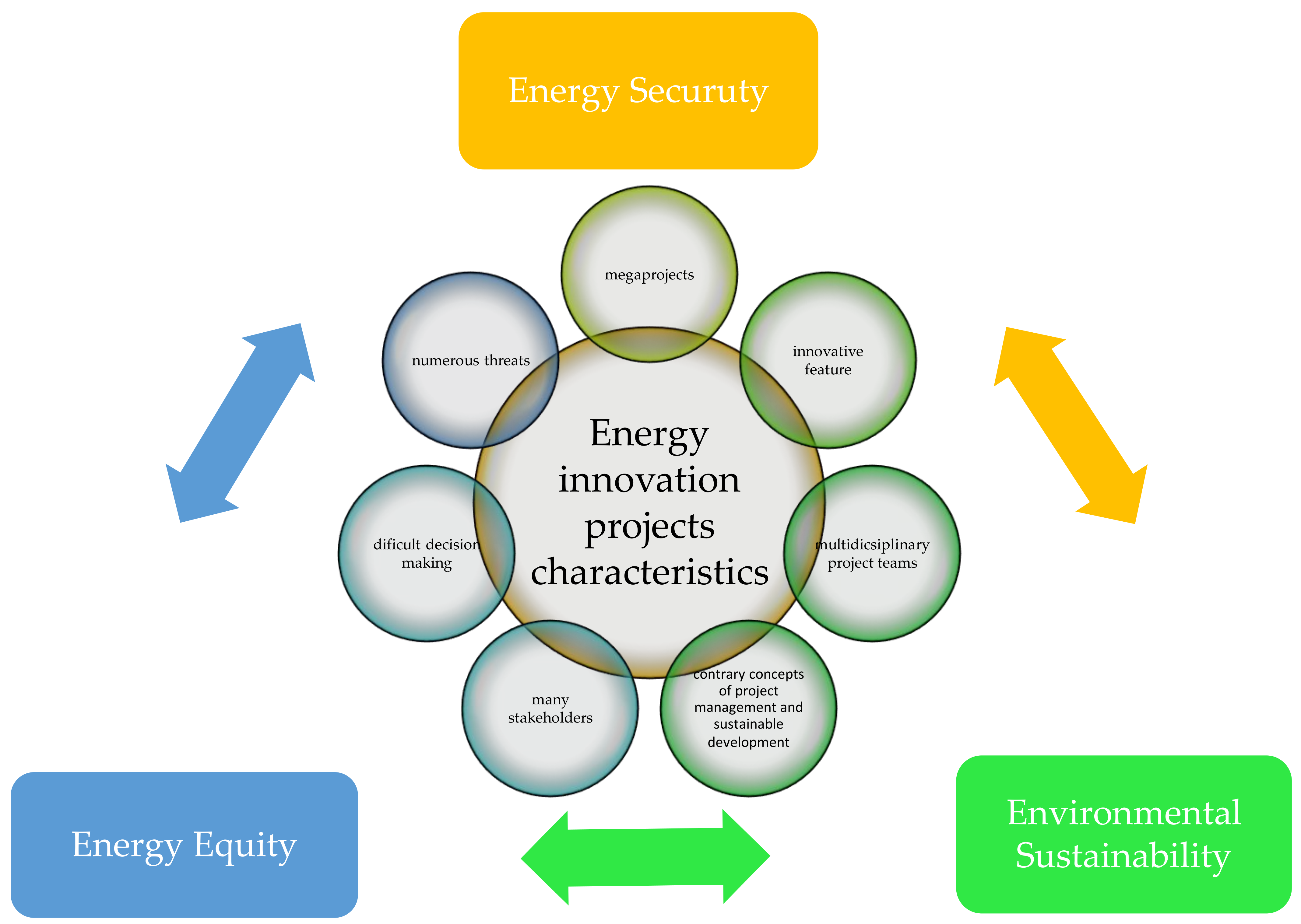
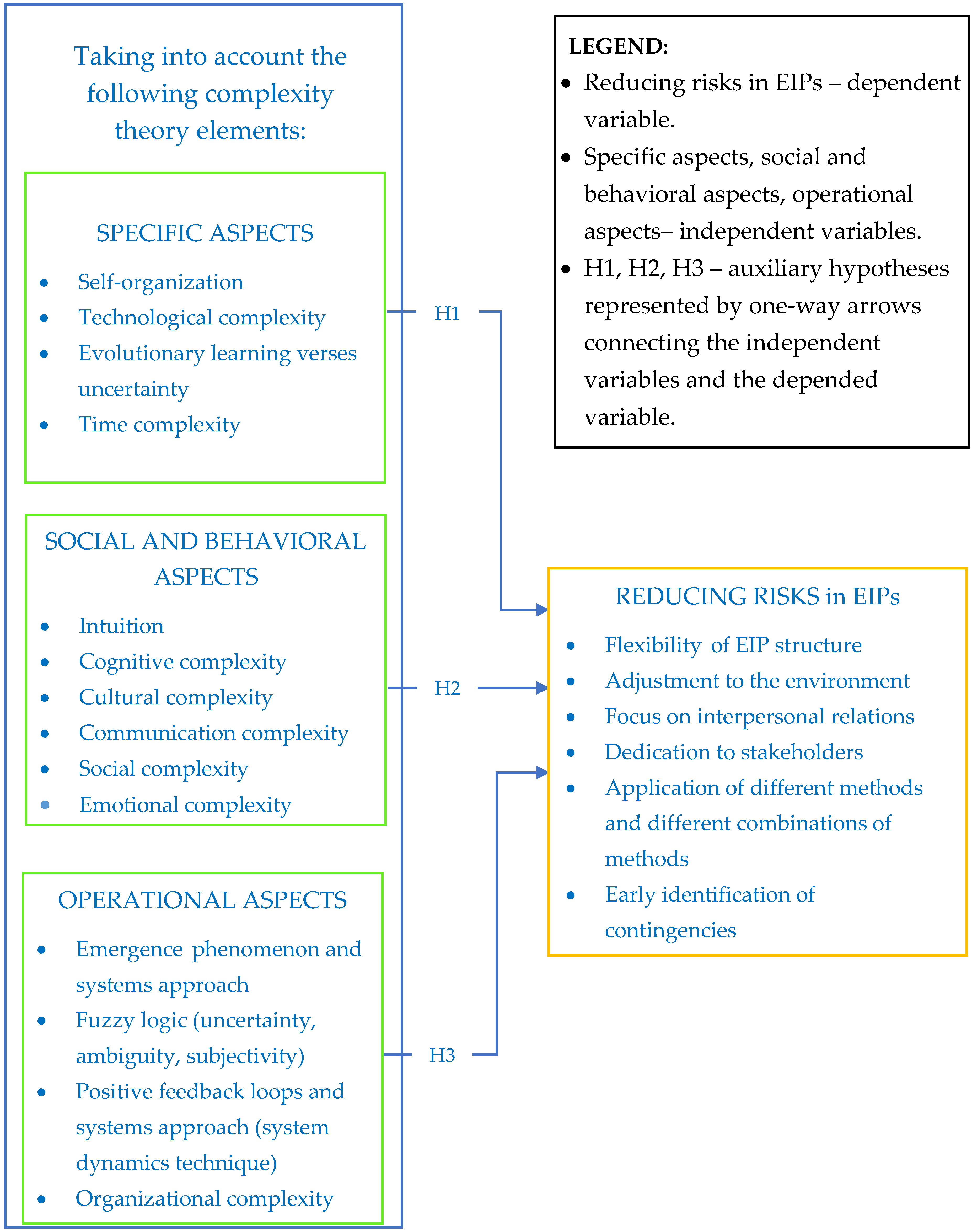
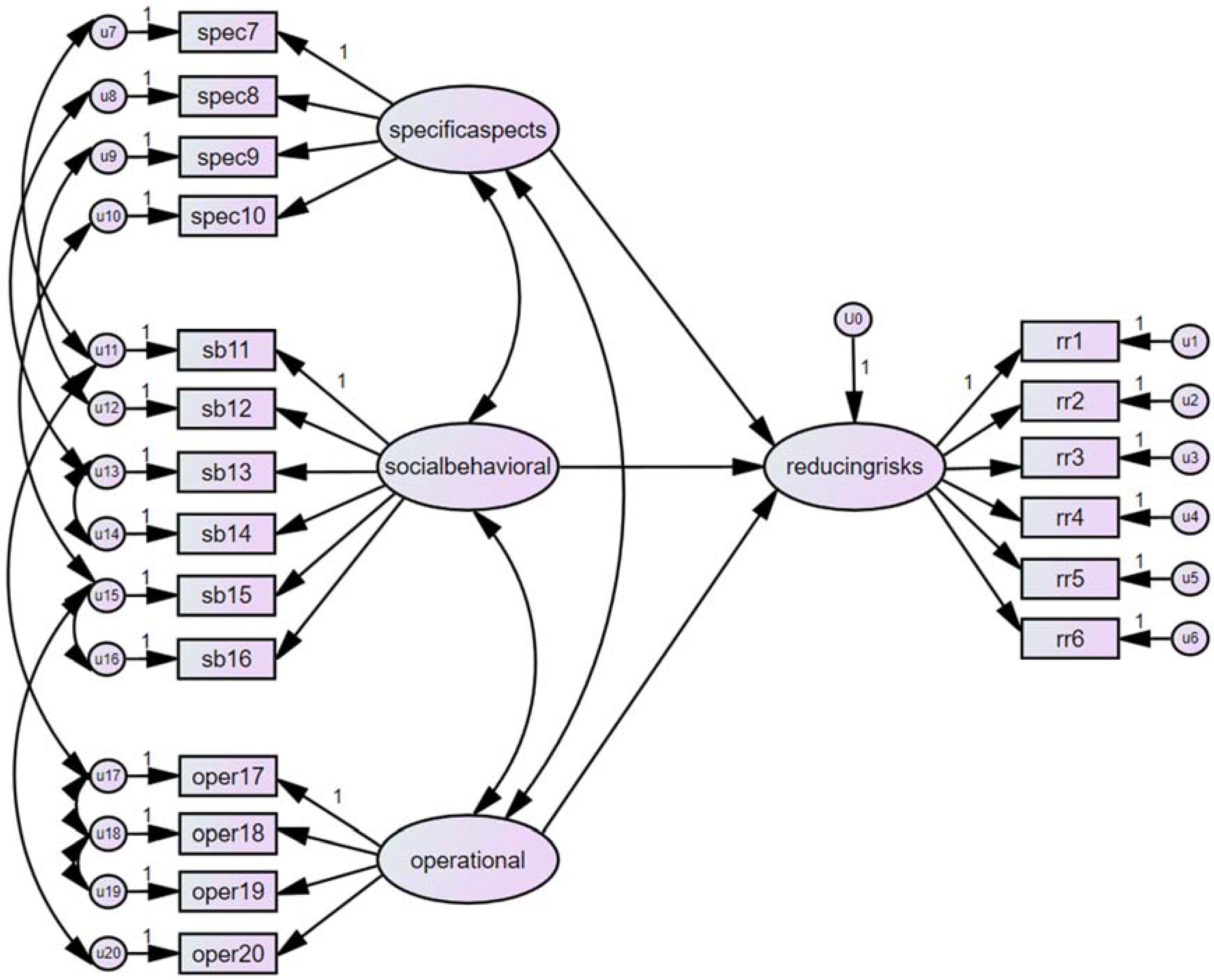
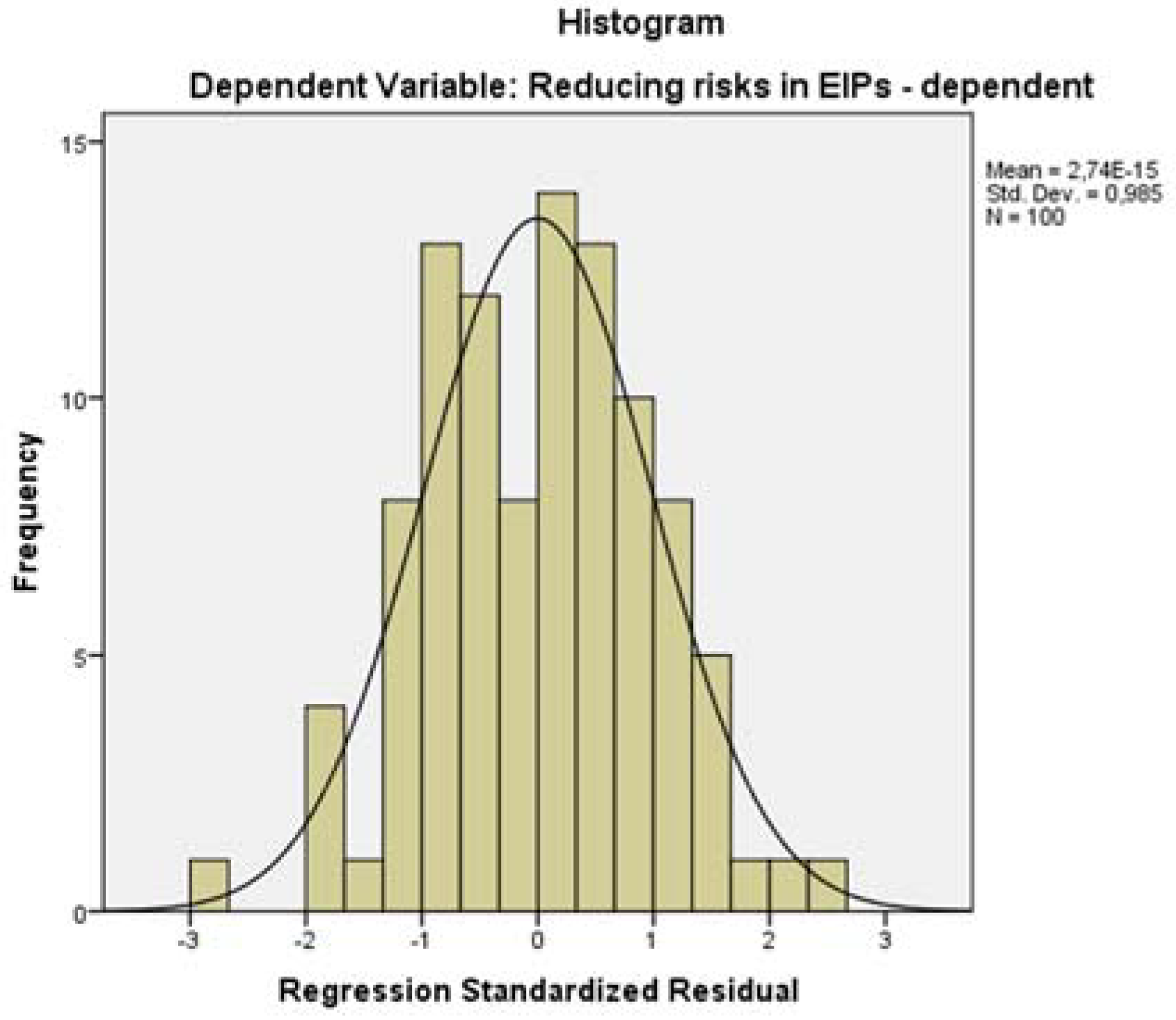
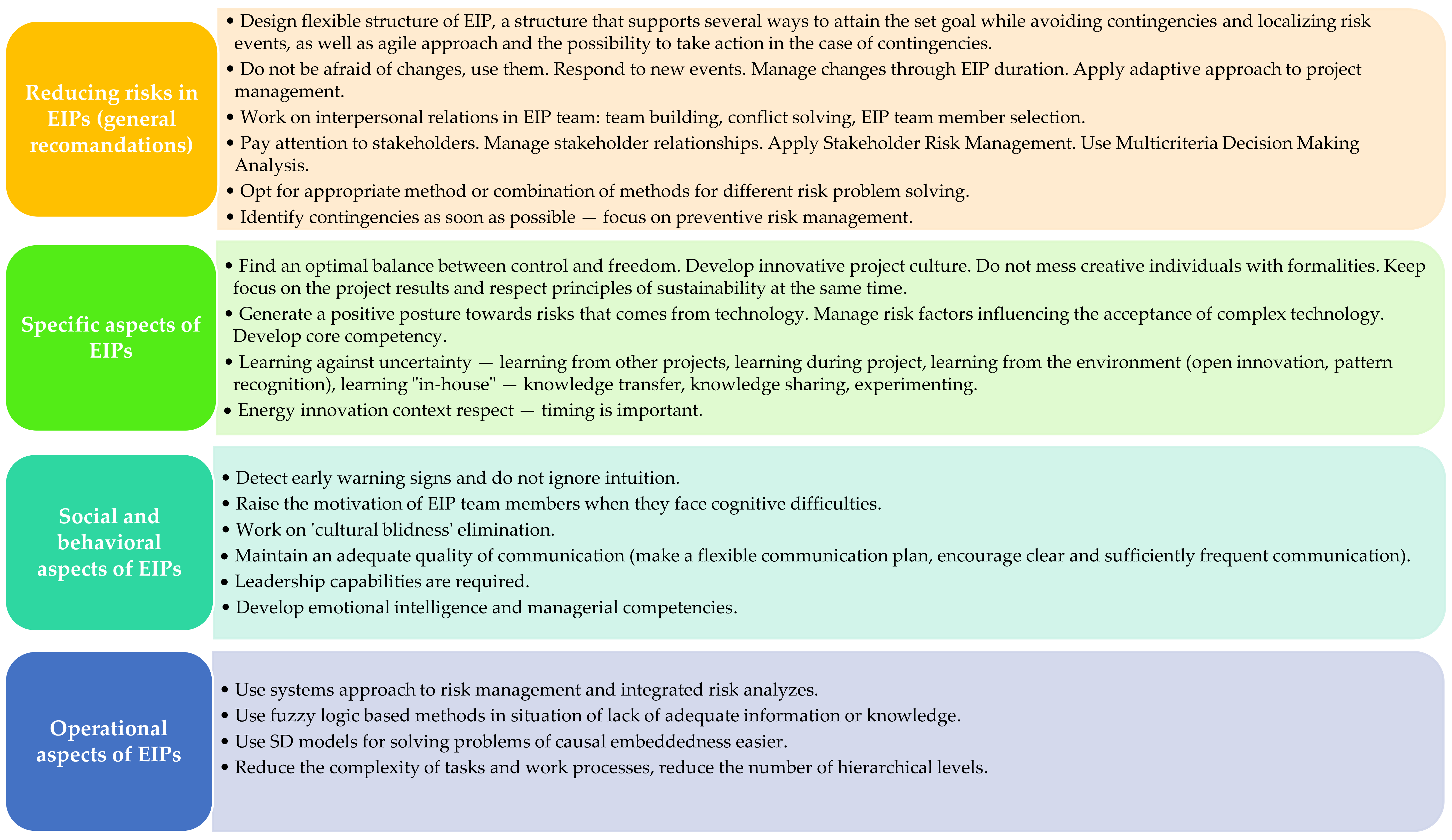
| Sustainable Development | Project Management |
|---|---|
| Long-term and short-term oriented | Short-term oriented (i.e., during project life cycle) |
| In the interest of this generation and future generations | In the interest of sponsor/stakeholders |
| Life-cycle oriented | Deliverable/result oriented |
| People, planet, and profit | Scope, time, and budget |
| Increasing complexity | Reduced complexity |
| Description of Respondents | |
|---|---|
| Average work experience | 16.39 years: = 5 years: 2% 6–10 years: 30% 11–20 years: 41% 21–35 years: 24% > 35 years: 3% |
| Qualifications | Bachelor or equivalent degree—32% Master of Science or equivalent degree—41% Doctoral degree—27% |
| Education in the field of project management | Formal education and/or professional certificates (IPMA, PMI, PRINCE, etc.)—74% Informal education (training, educational seminars, experience accumulated through practice)—26% |
| Current position | Portfolio manager—9% Program manager—13% Project manager—33% Assistant project manager—14% Other managerial positions—6% Expert positions—11% None *—14% |
| Average number of projects that the respondents have participated in | 31.47 |
| Average number of EIPs that the respondents have participated in | 9.05 |
| Total number of respondents | 100 |
| Specific Aspects | Social and Behavioral Aspects | Operational Aspects | Reducing Risks in EIPs | |
|---|---|---|---|---|
| Specific aspects | 1 | |||
| Social andbehavioral aspects | 0.142 | 1 | ||
| Operational aspects | 0.367 ** | 0.388 ** | 1 | |
| Reducing risks in EIPs | 0.404 ** | 0.581 ** | 0.543 ** | 1 |
| Control Variables | Relationship between Two Variables | Correlation | |
|---|---|---|---|
| Social and behavioral aspects | Specific aspects | Reducing risks in EIPs | 0.400 ** |
| Operational aspects | Specific aspects | Reducing risks in EIPs | 0.267 |
| Specific aspects | Social and behavioral aspects | Reducing risks in EIPs | 0.578 ** |
| Operational aspects | Social and behavioral aspects | Reducing risks in EIPs | 0.477 ** |
| Specific aspects | Operational aspects | Reducing risks in EIPs | 0.461 ** |
| Social and behavioral aspects | Operational aspects | Reducing risks in EIPs | 0.416 ** |
| Model | Unstandardized Coefficients | Standardized Coefficients | T | Sig. | Correlations | Collinearity Statistics | ||||
|---|---|---|---|---|---|---|---|---|---|---|
| B | Std. Error | Beta | Zero-Order | Partial | Part | Tolerance | VIF | |||
| (Constant) | 0.837 | 0.351 | 2.386 | 0.019 | ||||||
| Specific aspects | 0.239 | 0.078 | 0.237 | 3.072 | 0.003 | 0.404 | 0.299 | 0.221 | 0.865 | 1.156 |
| Social and behavioral aspects | 0.383 | 0.068 | 0.436 | 5.591 | 0.000 | 0.581 | 0.496 | 0.402 | 0.849 | 1.177 |
| Operational aspects | 0.238 | 0.069 | 0.287 | 3.454 | 0.001 | 0.543 | 0.332 | 0.248 | 0.750 | 1.334 |
| Individual Complexity Theory Elements | Influence on Reducing Risks in EIPs |
|---|---|
| Self-organization | 0.262 ** |
| Technological complexity | 0.045 |
| Evolutionary learning verses uncertainty | 0.132 |
| Time complexity | 0.320 ** |
| Intuition | 0.189 |
| Cognitive complexity | 0.489 ** |
| Cultural complexity | 0.347 ** |
| Communication complexity | 0.486 ** |
| Social complexity | 0.276 ** |
| Emotional complexity | 0.321** |
| Emergence phenomenon and systems approach | 0.355 ** |
| Fuzzy logic (uncertainty, ambiguity, subjectivity) | 0.440 ** |
| Positive feedback loops and systems approach (system dynamics (SD) technique) | 0.299 ** |
| Organizational complexity | 0.219 ** |
© 2018 by the authors. Licensee MDPI, Basel, Switzerland. This article is an open access article distributed under the terms and conditions of the Creative Commons Attribution (CC BY) license (http://creativecommons.org/licenses/by/4.0/).
Share and Cite
Mihić, M.M.; Dodevska, Z.A.; Todorović, M.L.; Obradović, V.L.; Petrović, D.Č. Reducing Risks in Energy Innovation Projects: Complexity Theory Perspective. Sustainability 2018, 10, 2968. https://doi.org/10.3390/su10092968
Mihić MM, Dodevska ZA, Todorović ML, Obradović VL, Petrović DČ. Reducing Risks in Energy Innovation Projects: Complexity Theory Perspective. Sustainability. 2018; 10(9):2968. https://doi.org/10.3390/su10092968
Chicago/Turabian StyleMihić, Marko M., Zorica A. Dodevska, Marija Lj. Todorović, Vladimir Lj. Obradović, and Dejan Č. Petrović. 2018. "Reducing Risks in Energy Innovation Projects: Complexity Theory Perspective" Sustainability 10, no. 9: 2968. https://doi.org/10.3390/su10092968
APA StyleMihić, M. M., Dodevska, Z. A., Todorović, M. L., Obradović, V. L., & Petrović, D. Č. (2018). Reducing Risks in Energy Innovation Projects: Complexity Theory Perspective. Sustainability, 10(9), 2968. https://doi.org/10.3390/su10092968







